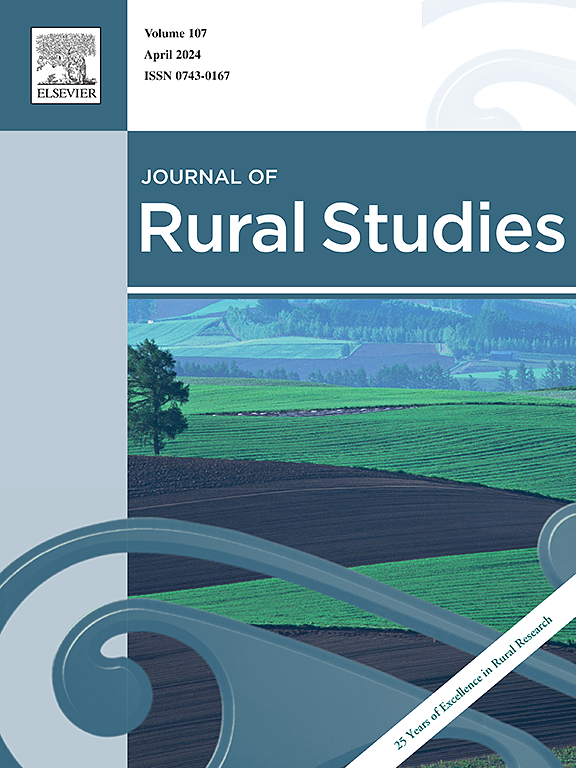From ‘counterurbanisation as practice’ to the ‘governance of counterurbanisation’: Structuring pro-rural relocations through planning regulation of housing
IF 5.7
1区 社会学
Q1 GEOGRAPHY
引用次数: 0
Abstract
Over the last four decades or more, counterurbanisation studies have focused on statistical analyses of deconcentrated population trends or demand-side explanations to understand ‘who’ is moving, ‘where’ and ‘why’. These studies, however, tend to overlook how individual preferences are ‘structured’ or influenced by supply-side enablers or constraints. In this paper, we argue that regulatory and policy regimes also matter in shaping counterurbanisation processes and outcomes. In other words, ‘counterurbanisation as practice’ intersects with the governance of counterurbanisation. We examine this theme through exploring the role of land-use planning in relation to regulating rural housing supply that enables or constrains counterurbanisation movements, drawing on Ireland as a case study. Utilising data from development plans, planning applications and a household survey, we evaluate the role of the planning system in identifying ‘where’ counterurbanisation is more likely to be accommodated through new development and in applying criteria in relation to ‘who’ is permitted to build a new rural property, including a range of social and economic criteria to determine an intrinsic need to live in a rural locality. This results in a group we identify as ‘familiar counterurbanisers’. We argue that rural housing policies have been constructed around a counterurbanisation narrative, resulting in policies that privilege selective pathways for counterurbanisers moving to rural localities, specifically for those with a pre-existing connection to rural places (e.g. family links, return migrants).
从“作为实践的逆城市化”到“逆城市化的治理”:通过住房规划调控构建有利于农村的搬迁
在过去的四十年或更长时间里,反城市化研究主要集中在人口分散趋势的统计分析或需求侧解释上,以理解“谁”在移动,“往哪里”和“为什么”。然而,这些研究往往忽略了个人偏好是如何“结构化”的,或者是如何受到供应方推动因素或制约因素的影响的。在本文中,我们认为监管和政策制度在形成反城市化过程和结果方面也很重要。换句话说,“作为实践的反城市化”与反城市化的治理是交叉的。我们通过探索土地使用规划在调节农村住房供应方面的作用来研究这一主题,从而实现或限制反城市化运动,并以爱尔兰为例进行研究。利用来自发展规划、规划申请和住户调查的数据,我们评估了规划系统在确定“哪里”更有可能通过新开发来适应反城市化,以及在应用与“谁”被允许建造新农村房产相关的标准方面的作用,包括一系列社会和经济标准,以确定居住在农村地区的内在需求。这就产生了一个我们称之为“熟悉的反城市化者”的群体。我们认为,农村住房政策是围绕反城市化叙事构建的,导致政策为反城市化者迁移到农村地区的选择性途径提供特权,特别是那些与农村地区已有联系的人(例如家庭联系,回乡移民)。
本文章由计算机程序翻译,如有差异,请以英文原文为准。
求助全文
约1分钟内获得全文
求助全文
来源期刊

Journal of Rural Studies
Multiple-
CiteScore
9.80
自引率
9.80%
发文量
286
期刊介绍:
The Journal of Rural Studies publishes research articles relating to such rural issues as society, demography, housing, employment, transport, services, land-use, recreation, agriculture and conservation. The focus is on those areas encompassing extensive land-use, with small-scale and diffuse settlement patterns and communities linked into the surrounding landscape and milieux. Particular emphasis will be given to aspects of planning policy and management. The journal is international and interdisciplinary in scope and content.
 求助内容:
求助内容: 应助结果提醒方式:
应助结果提醒方式:


